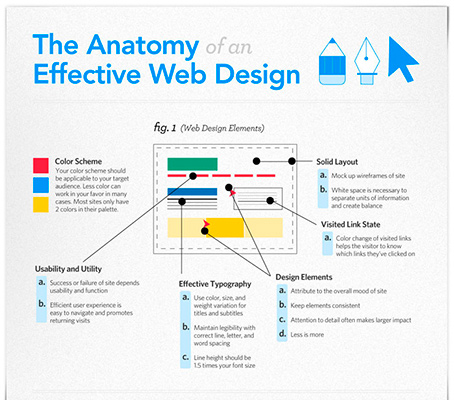Have you ever visited a web site that took forever to lots, had a confusing navigating system, or didn't present appropriately on your mobile device? Possibilities are, you rapidly abandoned that website and moved on to one that offered a far better individual experience.
In today's affordable online landscape, it's critical for services to prioritize web design that enhances individual experience in order to drive much better conversions. In this discussion, we will discover the value of receptive style, the utilization of instinctive navigation, and the optimization of page load rate to develop a smooth and appealing individual journey.
Stay tuned to uncover just how these elements can considerably impact your web site's success.
Importance of Responsive Design
Receptive layout is important in today's electronic landscape for producing internet sites that adjust perfectly to various screen sizes and tools. When your website is receptive, it instantly changes its layout and web content to fit any kind of device, whether it's a smart device, tablet, or desktop computer. https://website-and-marketing-com73951.bloggosite.com/36844039/uncovering-the-power-of-keywords-just-how-to-enhance-your-web-content-for-online-search-engine is essential due to the fact that a growing number of people are accessing the web with their mobile devices.
If your site isn't receptive, it can lead to a poor customer experience. Users might have to pinch and zoom to read web content, switches may be too tiny to click, and pictures might not be optimized for smaller sized displays. please click the following website can irritate customers and lead to high bounce prices and low conversions.
Making Use Of User-friendly Navigating
When creating a responsive website, it's important to concentrate on making use of intuitive navigation for a boosted customer experience.
Intuitive navigation refers to organizing your web site's food selection and navigating aspects in a logical and easy to use way. By doing so, you make it less complicated for site visitors to find what they're searching for and navigate via your website effortlessly.
Intuitive navigating helps reduce confusion and stress, ultimately causing far better customer interaction and increased conversions.
To attain instinctive navigating, consider making use of clear and descriptive labels for your menu things, applying a consistent format across all web pages, and integrating search functionality for quick access to details web content. In addition, it's vital to prioritize crucial web pages and info, ensuring they're plainly displayed and conveniently accessible.
Optimizing Web Page Load Speed
To improve customer experience, it's vital to enhance the web page lots rate of your website. Slow-moving filling times can irritate users and lead to greater bounce prices.
The good news is, there are a number of strategies you can apply to boost your site's tons rate. To start with, think about lessening the dimension of your photos by pressing them without compromising high quality.
In addition, maximize your code by decreasing unnecessary manuscripts and CSS files. An additional efficient method is to leverage browser caching, which allows specific components of your internet site to be kept in your area, lowering lots times for returning site visitors.
Additionally, think about making use of a content delivery network (CDN) to distribute your web site's documents across several servers, enhancing lots speed for individuals in different geographical locations.
Conclusion
In conclusion, by utilizing responsive design, user-friendly navigation, and maximizing page lots speed, web designs can considerably enhance customer experience and drive much better conversions.
With a straightforward user interface, easy navigating, and quick filling times, websites can record and preserve the focus of individuals, leading to boosted interaction and greater conversion rates.
So, don't postpone in executing these web design strategies to make certain a smooth and effective customer experience!
